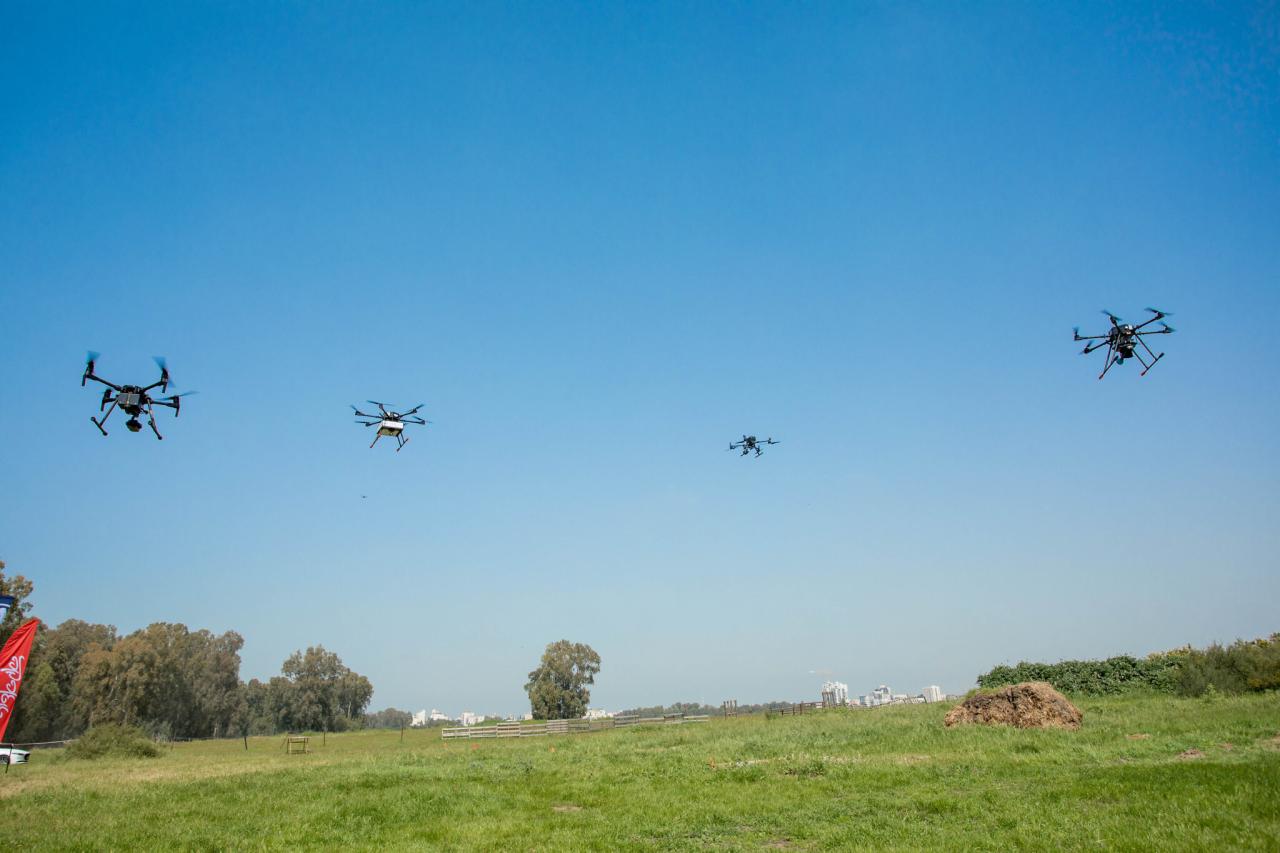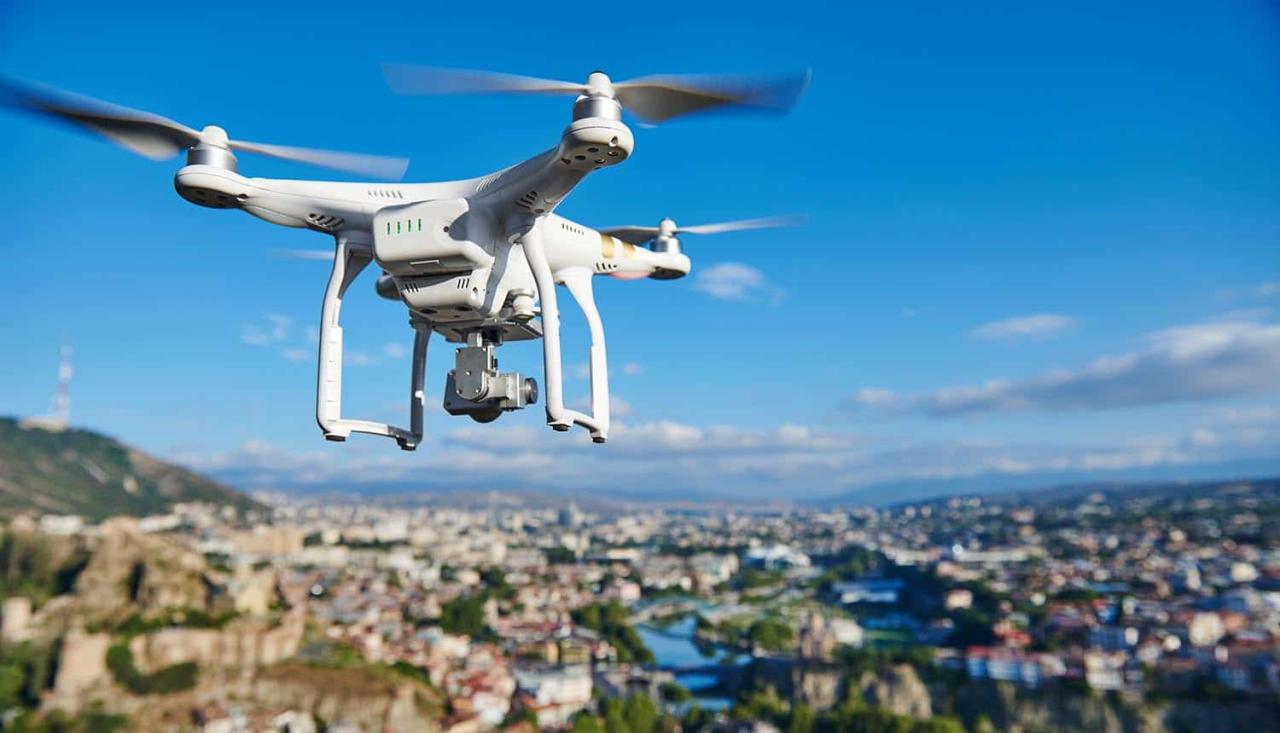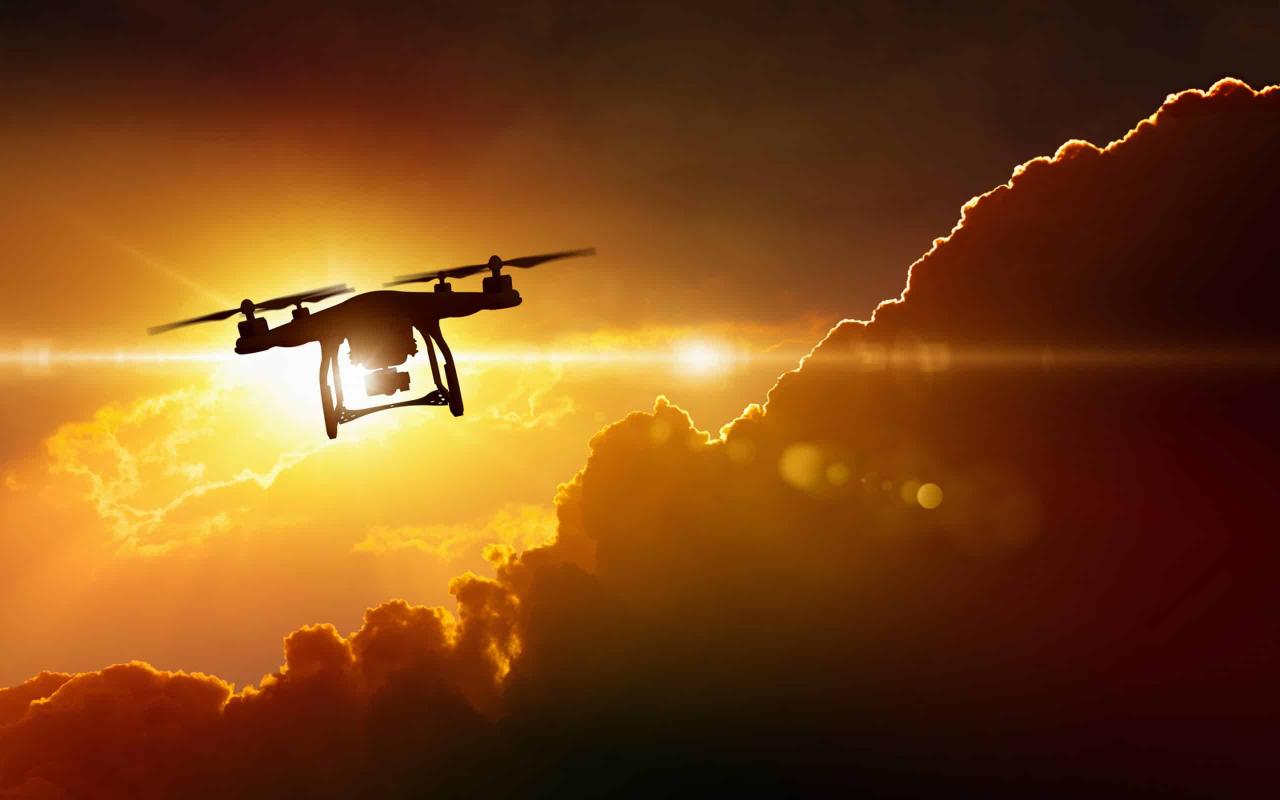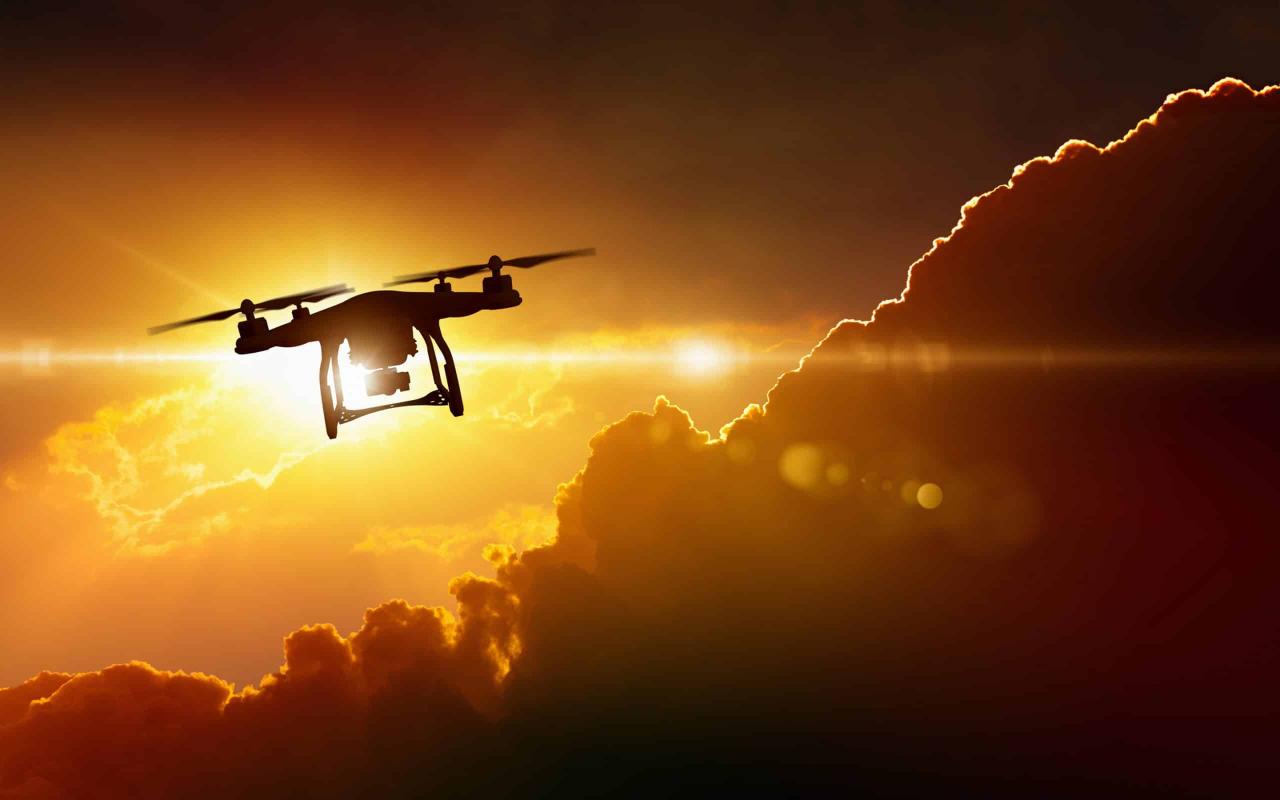Sky elements drones represent a fascinating intersection of technology and atmospheric science. Understanding how wind, temperature, precipitation, and air density affect drone performance is crucial for safe and effective operation. This exploration delves into the complexities of drone flight in variable atmospheric conditions, examining the technological solutions and safety protocols necessary for successful deployment across diverse applications.
From sophisticated sensor integration to advanced autonomous navigation systems, the field is constantly evolving. This analysis considers the impact of various sky elements on different drone types, the challenges faced by drone operators, and the innovative technologies being developed to enhance drone resilience and reliability in challenging environments. We’ll explore real-world applications and future trends, providing a comprehensive overview of this dynamic field.
Sky Elements: Defining the Scope
Understanding the impact of various atmospheric conditions on drone operations is crucial for ensuring safe and efficient flights. This section defines “sky elements” within the context of drone technology, examining their influence on flight performance and data acquisition.
Components of Sky Elements
Sky elements encompass a range of atmospheric factors impacting drone functionality. These include wind speed and direction, temperature variations, precipitation (rain, snow, hail), air density fluctuations, and atmospheric turbulence. Each element presents unique challenges to drone navigation and data accuracy.
Weather Conditions and Drone Flight
Wind significantly affects drone stability and flight time, especially for smaller multirotor drones. Strong winds can lead to drift, reduced flight endurance, and even crashes. Temperature variations influence battery performance and the accuracy of sensors. High or low temperatures can decrease battery life and alter sensor readings, affecting data quality. Precipitation can obstruct sensors, damage drone components, and create hazardous flying conditions.
Atmospheric Challenges to Drone Navigation
Atmospheric turbulence creates unpredictable air currents, impacting drone stability and making precise navigation challenging. Air density changes with altitude and temperature, affecting lift and requiring adjustments in drone control algorithms. These factors necessitate robust control systems and advanced navigation techniques.
Comparative Impact of Sky Elements on Drone Types
Different drone types exhibit varying degrees of sensitivity to sky elements. The following table highlights the comparative impacts of wind, temperature, and precipitation on multirotor and fixed-wing drones.
| Drone Type | Wind Impact | Temperature Impact | Precipitation Impact |
|---|---|---|---|
| Multirotor | Highly susceptible to wind drift; reduced flight time in strong winds. | Significant impact on battery performance; sensor accuracy affected by extreme temperatures. | Sensors easily obstructed; risk of water damage to electronics. |
| Fixed-wing | More resistant to wind drift than multirotors, but strong headwinds can reduce range and efficiency. | Similar impact on battery performance and sensor accuracy as multirotors. | Reduced visibility; potential for icing on wings in cold, wet conditions. |
Drone Technology and Sky Elements Interaction
Modern drones employ sophisticated sensor systems and control algorithms to mitigate the effects of sky elements on flight performance and data acquisition. This section explores these technologies and their effectiveness in challenging conditions.
Sensor Roles in Compensating for Sky Element Influences
Several sensors play critical roles in compensating for sky element influences. GPS provides location data, crucial for navigation even in turbulent conditions. Inertial Measurement Units (IMUs) measure acceleration and rotation, aiding in maintaining stability. Barometers measure air pressure, providing altitude information for accurate flight control. These sensors, along with others such as anemometers (measuring wind speed), work in concert to provide a comprehensive picture of the flight environment.
Sky Elements Drones specializes in creating breathtaking aerial displays, meticulously choreographing swarms of drones for captivating events. However, the recent incident highlighted in this news report, a drone show accident , underscores the importance of robust safety protocols and rigorous testing. Sky Elements prioritizes these aspects to ensure the continued safe and spectacular use of drone technology in our shows.
Autonomous Navigation and Obstacle Avoidance Techniques
Advanced drones utilize autonomous navigation systems incorporating sophisticated algorithms to plan optimal flight paths, avoid obstacles, and adapt to changing wind conditions. These systems leverage sensor data to make real-time adjustments to maintain stability and safety. Computer vision and LiDAR technology are increasingly integrated to enhance obstacle detection and avoidance capabilities, even in poor visibility.
Data Acquisition and Processing Methods
Data acquisition and processing methods must be adapted to account for sky element challenges. For example, in high-wind conditions, multiple data points may be collected to average out fluctuations and improve accuracy. Data processing algorithms often incorporate error correction techniques to account for sensor noise and atmospheric distortions.
Drone Flight Controller Decision-Making Process
The following flowchart illustrates the decision-making process of a drone’s flight controller in response to changing wind speeds and directions.
(A detailed flowchart would be included here illustrating the steps: Wind sensor data input -> Wind speed and direction analysis -> Flight controller adjustment of motor speeds and angles -> Stability and trajectory correction -> Obstacle avoidance maneuvers if necessary -> Data logging and transmission.)
Applications and Use Cases
Numerous drone applications are significantly impacted by sky elements. This section explores several examples and Artikels best practices for mitigating risks.
Examples of Drone Applications Impacted by Sky Elements
Aerial photography, surveying, and delivery services are particularly vulnerable to adverse weather. Strong winds can affect image stability in aerial photography, while rain or snow can impede data acquisition in surveying. Delivery drones face challenges in maintaining stable flight paths and delivering packages safely in inclement weather.
Case Studies in Mitigating Risks, Sky elements drones

(Case studies illustrating successful mitigation strategies in specific applications would be included here. For example, a case study could detail how a surveying company adjusted its flight schedule based on weather forecasts to avoid delays and ensure data accuracy.)
Best Practices for Safe Drone Operation

- Always check weather forecasts before flight.
- Avoid flying in strong winds or during precipitation.
- Use appropriate safety measures such as redundancy systems and emergency landing procedures.
- Maintain a safe distance from obstacles.
- Follow all relevant regulations and guidelines.
Integrating Weather Forecasting Data
Integrating weather forecasting data into drone flight planning is crucial for risk mitigation. This involves using weather APIs or dedicated weather apps to obtain real-time information on wind speed, direction, temperature, and precipitation. This data can then be used to determine optimal flight times and locations, or to postpone flights altogether if conditions are unfavorable.
Future Trends and Technological Advancements
Ongoing research and development are focused on enhancing drone resilience to challenging sky elements. This section explores emerging technologies and their potential impact.
Emerging Technologies for Improved Drone Resilience
Advanced sensor fusion techniques combine data from multiple sensors to improve accuracy and reliability in challenging conditions. AI-powered navigation systems adapt more effectively to unpredictable weather patterns. These technologies work together to provide more robust and reliable drone performance.
Predictive Modeling and Machine Learning
Predictive modeling and machine learning algorithms are being developed to anticipate and adapt to changing sky conditions. These models can analyze historical weather data and real-time sensor inputs to predict potential hazards and adjust flight plans accordingly, optimizing flight safety and efficiency.
New Drone Designs Optimized for Extreme Weather
New drone designs are incorporating features specifically aimed at enhancing performance in extreme weather. These may include improved aerodynamic designs for wind resistance, reinforced structures for protection against impacts, and specialized materials to withstand extreme temperatures or precipitation.
Sky elements drones, with their intricate choreography and vibrant displays, are pushing the boundaries of aerial entertainment. However, even the most advanced technology can experience unforeseen issues, as highlighted by the recent orlando drone show malfunction , reminding us of the complexities involved in large-scale drone operations. Despite such setbacks, the future of sky elements drones remains bright, promising even more spectacular shows with improved safety protocols.
Timeline of Advancements in Drone Technology

- 2010-2015: Basic sensor integration and rudimentary autonomous flight capabilities.
- 2015-2020: Development of more advanced sensor fusion and improved obstacle avoidance systems.
- 2020-Present: Emergence of AI-powered navigation and predictive modeling techniques; development of drones designed for extreme weather operation.
- Future: Integration of advanced weather prediction models and more sophisticated autonomous decision-making systems.
Safety and Regulatory Considerations: Sky Elements Drones
Safe drone operation in various sky conditions requires adherence to regulations and safety protocols. This section Artikels key considerations for responsible drone use.
Regulations and Safety Protocols
Regulations concerning drone operation vary by region and are constantly evolving. These regulations often address altitude limits, flight restrictions in certain areas, and requirements for pilot certification. Adherence to these regulations is essential for safe and legal drone operation.
Impact of Sky Elements on Airspace Management
Sky elements significantly influence airspace management and traffic control. Adverse weather conditions may necessitate flight restrictions or closures to ensure safety. Integration of weather data into air traffic management systems is becoming increasingly important for safe and efficient drone operations in shared airspace.
Safety Features in Modern Drones
Modern drones incorporate several safety features to improve resilience to sky element challenges. These include automatic return-to-home functions, low-battery alerts, and obstacle avoidance systems. These features enhance safety and minimize the risk of accidents.
Drone Pilot Pre-Flight Checklist
- Check weather forecast for wind speed, direction, temperature, and precipitation.
- Assess wind conditions at the intended flight location.
- Inspect drone for any damage or malfunctions.
- Ensure sufficient battery charge.
- Verify compliance with all relevant regulations.
- Plan an emergency landing procedure.
The integration of drones into various sectors hinges on successfully addressing the challenges posed by unpredictable sky elements. Through advanced sensor technology, autonomous navigation systems, and robust safety protocols, the limitations imposed by weather conditions are progressively being overcome. As technology continues to advance, we can anticipate even greater drone resilience and wider adoption across a broader range of applications, ultimately leading to safer and more efficient operations in diverse atmospheric conditions.
FAQ Section
What is the maximum altitude for safe drone operation in adverse weather?
Maximum safe altitude varies greatly depending on specific weather conditions and drone capabilities. Regulations and manufacturer recommendations should always be followed, prioritizing safety over altitude.
How do drones compensate for wind gusts during flight?
Sky Elements Drones prides itself on safe and spectacular drone displays. However, the recent unfortunate incident highlighted in this report, drone show accident , underscores the importance of rigorous safety protocols. At Sky Elements, we continually review and refine our procedures to prevent such occurrences, ensuring our drone shows remain both breathtaking and completely safe.
Drones utilize various sensors (GPS, IMU, barometer) and control algorithms to detect and compensate for wind gusts, maintaining stability and trajectory. Advanced systems employ predictive modeling to anticipate wind changes.
What are the legal implications of flying a drone in poor visibility?
Flying drones in poor visibility is heavily regulated and often prohibited due to safety concerns. Local aviation authorities should be consulted before operation in low visibility conditions. Compliance with all applicable regulations is essential.
